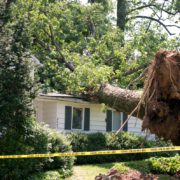How to Compare Homeowners Insurance Policies
Shopping for homeowners insurance policies has never been easier. With just a few keystrokes, you can get quotes online from major carriers. But then what? Do you just go with the lowest quote? Pick the provider whose TV ads you like? Opt for the insurer your mom recommends? How do you compare homeowners insurance to make certain you’re getting the policy that works best for your needs and your budget? Read on for some practical tips to compare homeowners insurance coverage, oranges to oranges.
1. Be Prepared Before You Shop
- If you already have a policy, you have somewhere to start. If you don’t, round up all the documents you have to help you ascertain the value of your home and possessions. Mortgage statements, receipts from upgrades and renovations, receipts from major purchases such as appliances, furniture, electronics, appraisals of collections, jewelry, artworks, etc. Adding up what it would cost to replace your home and possessions will give you an idea of how much coverage you need.
- Are you in an area that’s a high risk for flooding or earthquakes? These are not covered by standard homeowners policies and you’ll need to pony up for supplemental coverage. If you’re in a location that’s prone to other natural disasters, you may want to factor that into your total coverage amount, as well.
2. Understand Insurance Jargon
Knowing the lingo is half the battle. Among the most important things to understand when comparing policies is the difference between Actual Cash Value (ACV) and Replacement Cost. ACV is the cost to replace a covered item with something new of like quality, less the cost of depreciation (i.e., wear and tear incurred since the item was new). Replacement Cost, on the other hand, means your insurance company will reimburse you to replace the lost or damaged item with a new item of equal effectiveness at today’s cost. When you’re talking about a roof blown off in a windstorm, that difference could be thousands of dollars. Yes, your monthly premiums are cheaper for ACV policies, but you need to ask yourself if the savings are worth it in the long-term.
Named Perils versus Open Perils is another term to know. If a policy offers coverage for named perils, it only covers what’s specifically listed on the policy. If it isn’t there, it isn’t covered. Open peril policies provide a list of what’s excluded from coverage. They’re more comprehensive, and therefore a bit more expensive.
3. Think Twice About Deductibles
A high deductible can mean lower premiums but it also means you’ll need to cough up more cash when you file a claim. Be realistic about what you can comfortably cover. In many cases, when you have a mortgage, your lender will set requirements for your deductible.
Insurance agency owner and blogger R.J. Weiss warns to be on the lookout for catastrophic deductibles. Weiss says these are a new trend among home insurance companies who “change their policy to read that for any catastrophic losses such as hail/wind, there is a separate deductible….These deductibles typically are 1% to 2% of your total home’s value.”
4. Watch Out for Water Back-Up Limits
Weiss also points out that water back-up claims are common but that standard homeowners policies typically excluded this coverage, and then add it back in as an endorsement. If you have a finished basement or use your basement to store expensive stuff, make sure you have this coverage and that it is adequate.
5. Find Out About Discounts
Insurance companies offer lots of discounts for lots of things from multiple policies to home security and fire prevention systems to automatic payments. Be sure to ask about available discounts when you’re getting quotes.
6. Shop & Compare
Make a checklist with the types and amounts of coverage you need. Then get quotes from at least three or four companies, using the same parameters. Print the quotes out and compare homeowners insurance to your checklist. Eliminate any company that doesn’t provide the coverage you want or whose premium quote is significantly higher (or cheaper) than the other companies. You might also want to visit their websites to see what types of customer services they offer.
7. Research the Company
Your policy is only as good as the company that issued it. You can be reasonably confident when dealing with major insurers with a national presence. But if you haven’t heard of company, do your homework. Check their financial rating with a third-party company such as A.M. Best that specializes in issuing credit ratings for insurers.
While you’re at it, check their customer service record. After all, you won’t care how cheap your policy is if you can’t get your claim handled or your questions answered in a prompt, satisfactory manner. Places to look include the websites for the insurance commission for your state, the Better Business Bureau and the National Association of Insurance Commissioners, as well as social media rating sites.
When you’re satisfied you have the coverage you want from a reputable company with great customer service at the right price, you’re ready to sign on the dotted line. But, be prepared to review your policy at least once a year and upgrade it to adapt to new conditions.

 EINSURANCE
EINSURANCE EINSURANCE
EINSURANCE  EINSURANCE
EINSURANCE  EINSURANCE
EINSURANCE EINSURANCE
EINSURANCE